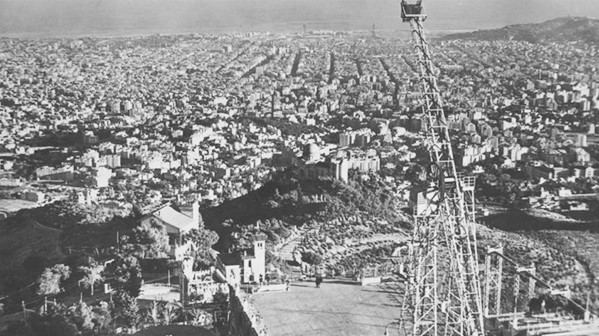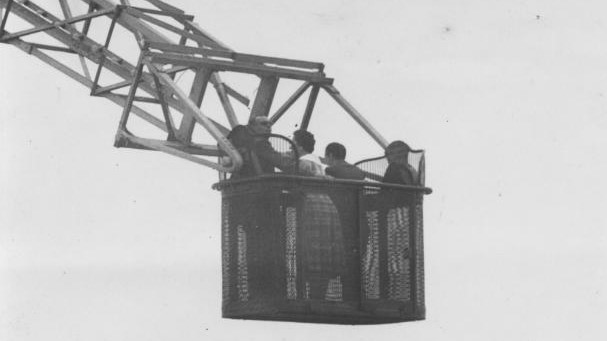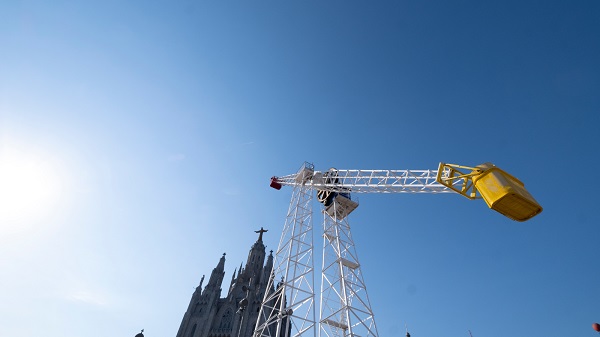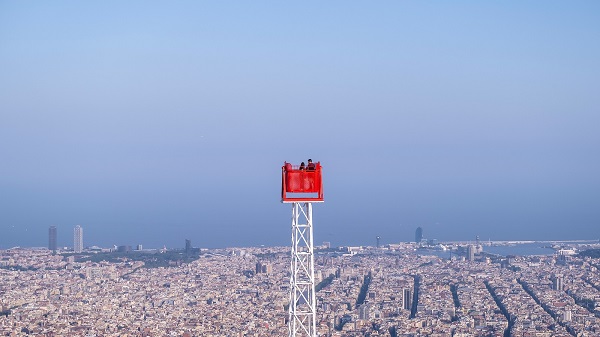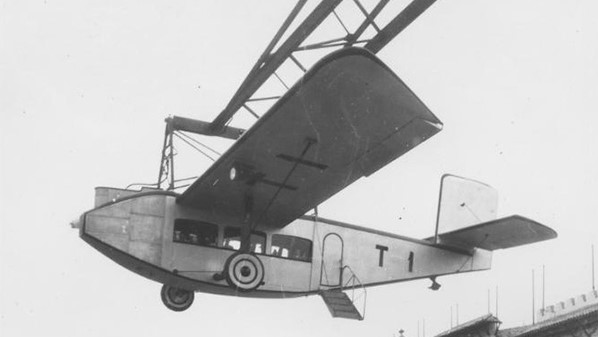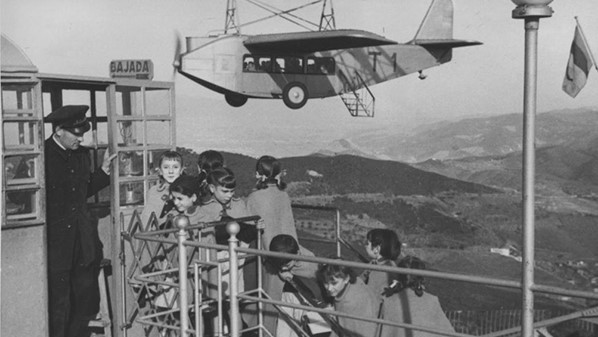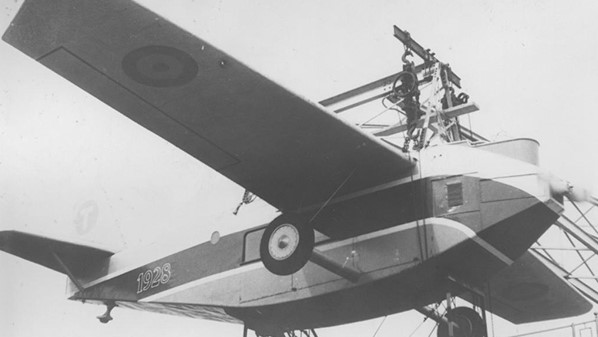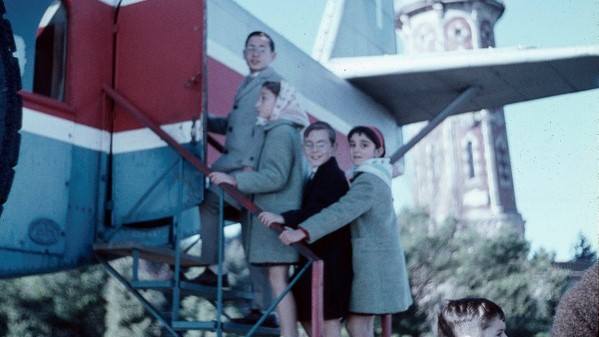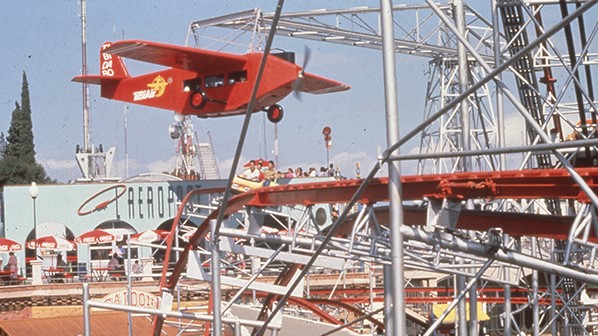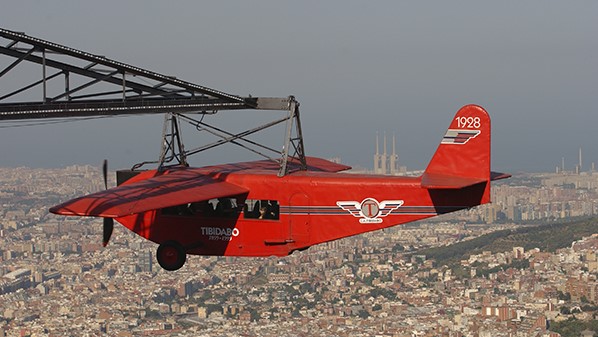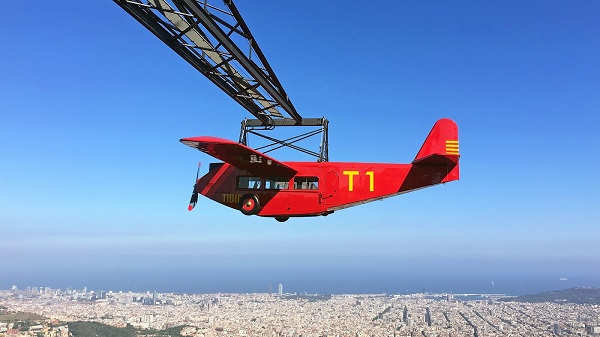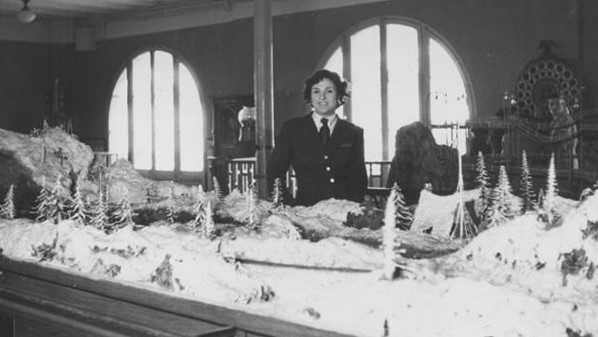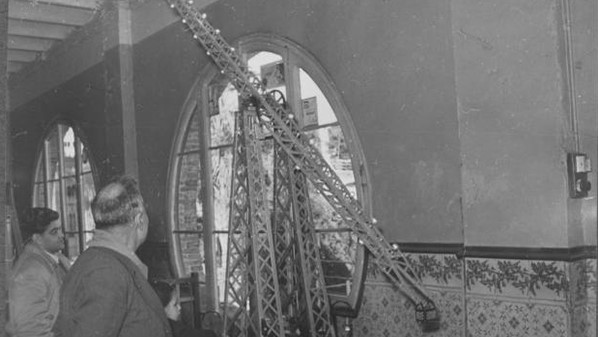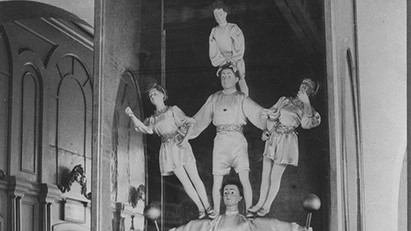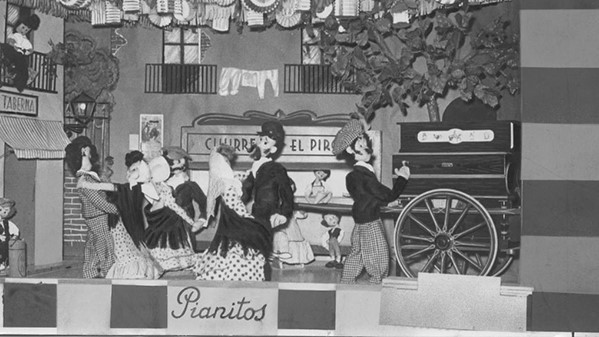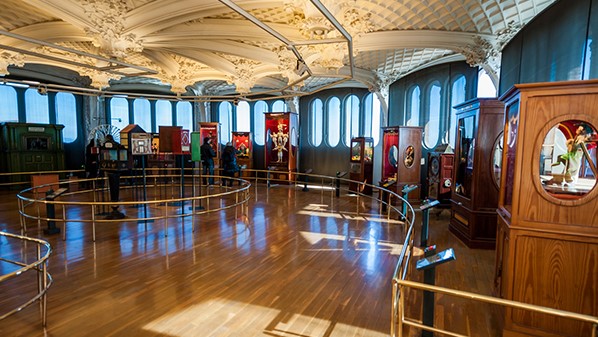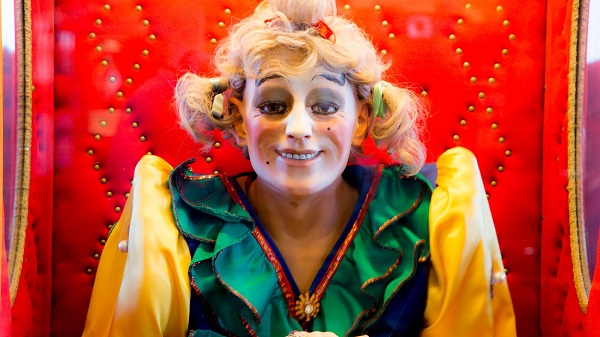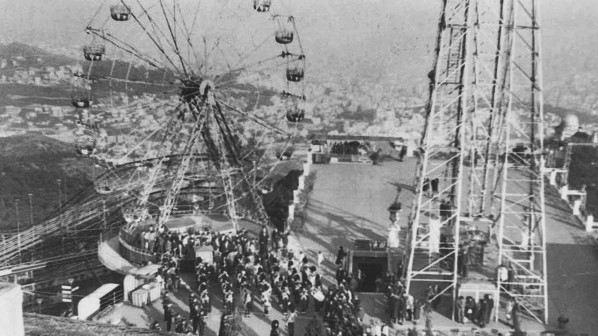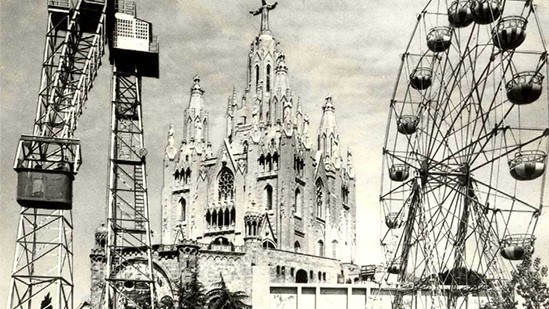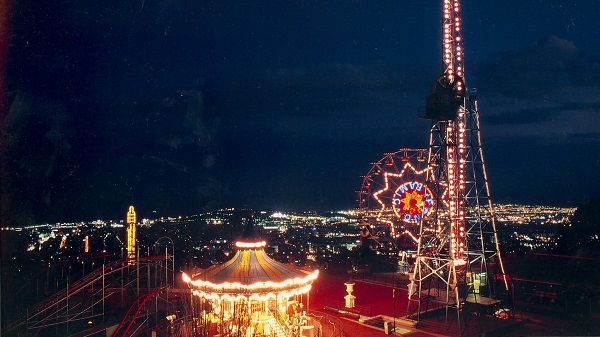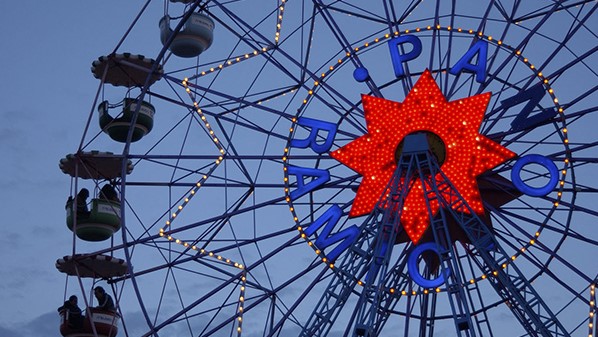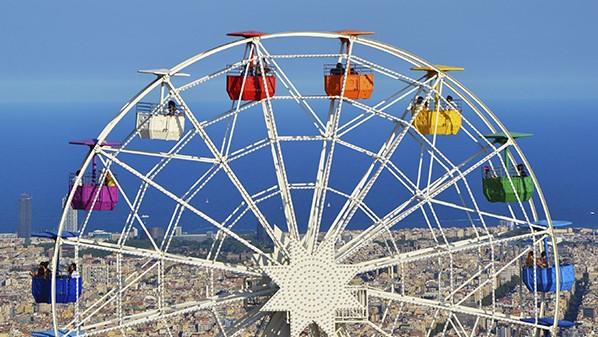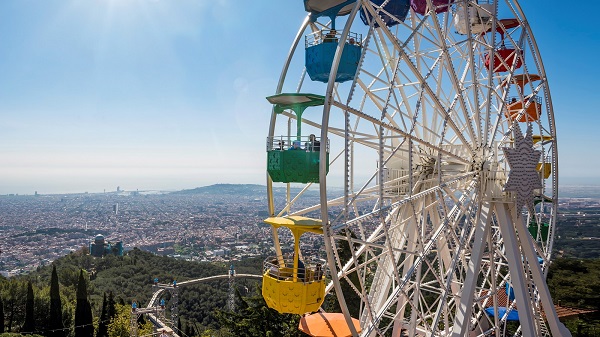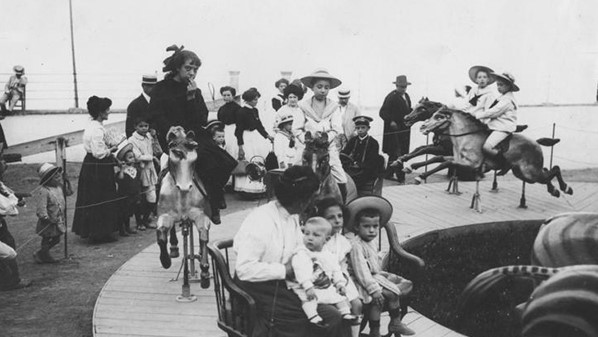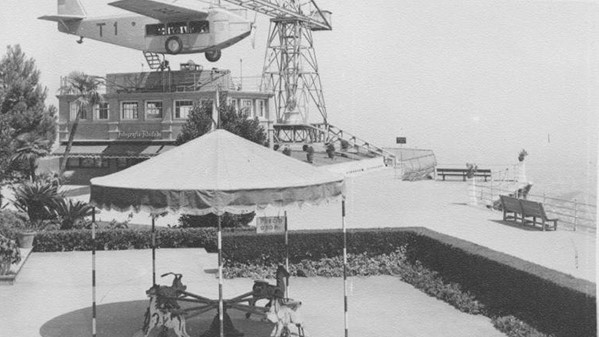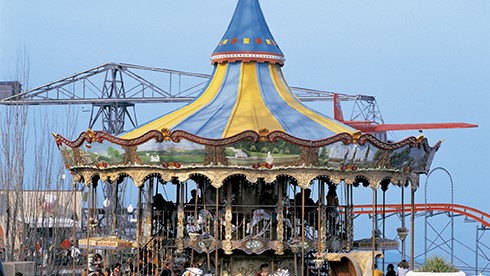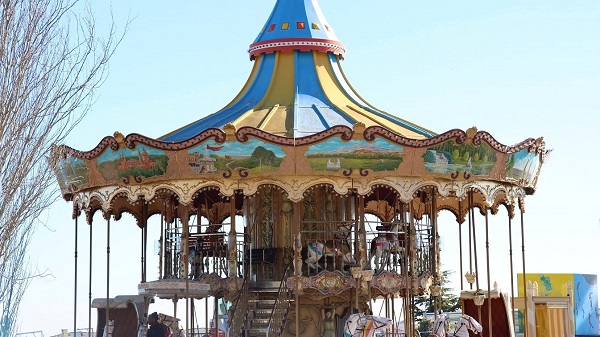Emblematic rides
Talaia
On December 18, 1921, Talaia or Gran Palanca was opened, an imposing metal construction 50 m high that ascended visitors to 551 m above sea level. The success was resounding, to the point that the public attributed healing properties to it: it was believed that if children with whooping cough stayed for a few minutes at those heights, it would do them good.
Today, it is a unique attraction in the world that has not lost its ability to offer us sensations that are difficult to forget. A real balcony in the city of Barcelona.
Avió
This was the last major work of Dr. Andreu and is perhaps one of the most emblematic attractions of the Amusement Park. Without a doubt, the icon of Tibidabo. "It will carry you like a gigantic bird over an incredible panorama, and you will notice the sensations that occur in air travel", this is how the incorporation of the Avió was announced on September 23, 1928.
Built at Tallers Estrada de Sarrià and designed by Fath engineers under the direction of Marià Rubió, it is a replica of the first device that made the Barcelona-Madrid journey. The main feature is that it is powered by its own propeller and inside it retains original elements such as the 1933 radio-telephone station.
On January 31, 2017, the Avió was taken down for the first time, after 88 years in operation, to be restored, while preserving the structure and essence of the original attraction. Until then, he had covered the distance equivalent to 20 times around the world.
Museum of Automatons
Since the opening of the Amusement Park in 1901, it has been importing automatons and automatic machines from several European countries. But from 1925 it was the same workers who manufactured them until 1954.
Currently, the oldest piece is the Pallasso Mandolinista from 1880, but there are other very popular ones such as Els Equilibristes, L'Orquestra Prodigiosa, El Poeta s'adorm or La Monyos, a famous character of the rambles of the 1930s. The collection's fame even made Walt Disney want to buy them in 1957 during a visit to the Amusement Park. Fortunately, he left with empty suitcases due to the company's refusal to sell them.
At the end of the seventies, they were removed from the weather of the Park to be restored in depth and since 1982 they have been part of the Museum of Automatons. The museum is housed in a modernist building from 1909 and houses one of the best collections in the world.
The latest addition has been The Gaüs Brothers or The Balance of the World, a state-of-the-art automaton created by Lluís Ribas, restorer and current curator of the Museum. This piece was a finalist at the 2005 Aichi Universal Exhibition in Japan.
Giradabo
Ferris wheels are classic amusement park attractions. In the 1950s and 1960s, several were installed, two for children and the large Ferris wheel on level 6, where the Carrousel is currently located.
At the end of the 80s, the Panoramic was inaugurated, the predecessor of the current Giradabo, which arrived at the Park in 2014 and where a basket was adapted for people with reduced mobility.
Carrusel
Carousels are iconic attractions at amusement parks and fairs. In Tibidabo, the first one arrived in 1910, with the definitive relaunch of Tibidabo as an amusement park, and it was an electric carousel that was installed where the Crash Cars are now (in those years there was no level 5). As the years passed, other carousels were installed for children and others for the whole family until we reached the one we know now, which was installed in 1989 in the Panoramic Area.
This Carousel, set with period details, is decorated in a personalized way. There are paintings, on the inside of the ceiling, of the automatons that can be found in our Automata Museum. On the outside of the roof, there are also painted emblematic places of the city of Barcelona.


